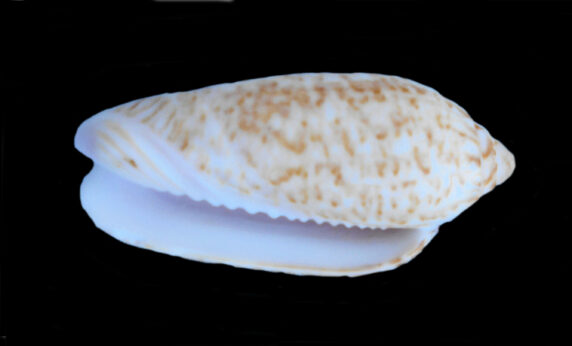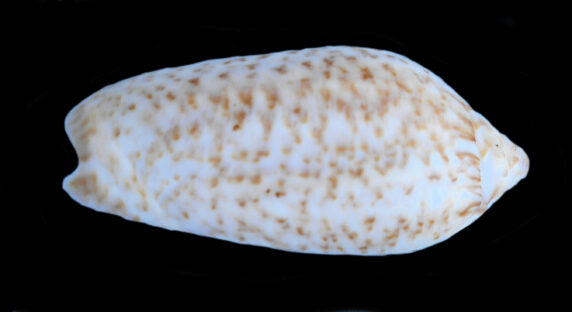Veined Olive Shell, Oliva spicata

 Veined Olive Shell, Oliva spicata. Shell collected off the beach of Bahía Concepción, Baja California Sur, October 2019. Size: 4.1 cm (1.6 inches) x 1.9 cm (0.7 inches). Collection, photograph and identification courtesy of Bob Hillis, Ivins, Utah.
Veined Olive Shell, Oliva spicata. Shell collected off the beach of Bahía Concepción, Baja California Sur, October 2019. Size: 4.1 cm (1.6 inches) x 1.9 cm (0.7 inches). Collection, photograph and identification courtesy of Bob Hillis, Ivins, Utah.
The Veined Olive, Oliva spicata (Roding, 1798), is a gastropod mollusk that is a member of the Olividae Family of Olives. They very significantly in color, pattern and shape with individual shells being wider or more tapering than others. They have low to moderate spires, a defined channel where the body whorl meets the spire, the anterior of the shell is marked with ridges spiraling from the interior, and the inner lip of the aperture is well marked with short ridges. The exterior of the shell is cream, brown, or yellowish-gray and marked with brown that can include specks, spots, bands, or chevrons. Veined Olives are thought to be the most common Olive in the Sea of Cortez, but due to the wide variation between individual shells they can be difficult to identify. The Veined Olive Shells reach a maximum of 8.5 cm (3.3 inches) in length and 3.9 cm (1.6 inches) in height.
Veined Olives reside over and within sand substrate from the intertidal zone to depths up to 9 m (30 feet). They are found throughout the Sea of Cortez and south to Peru.
Due to the variability found in this species, these shells have mistakenly been given many names. Synonym including: Oliva araneosa, Oliva brunnea. Oliva cumingii, Oliva fuscata, Oliva. intertincta, Oliva ionopsis, Oliva ligneola, Oliva melchersi, Oliva oniska, Oliva punctata, Oliva rejecta, Oliva subangulata corteziana, Oliva timoria, Porphyria arachnoidea, and Porphyria spicata.